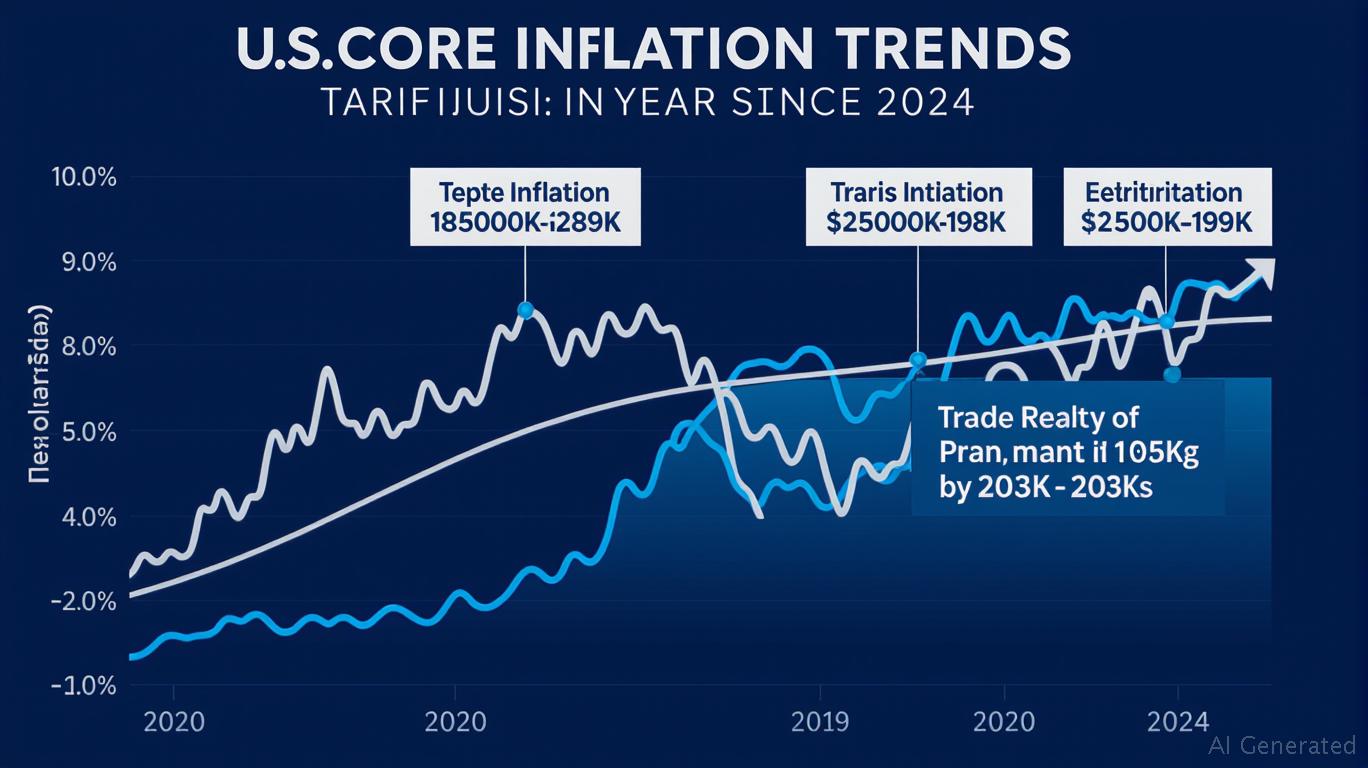AInvest Newsletter
Daily stocks & crypto headlines, free to your inbox
The Federal Reserve faces a precarious balancing act as tariff-driven inflation pressures linger, complicating its ability to cut rates and stabilize markets. With global trade tensions reshaping supply chains and pricing dynamics, investors must assess the timing and persistence of these inflationary forces to position portfolios for volatility and shifting policy cues.

Recent empirical analysis reveals that tariffs imposed in 2024–2025 could add up to 2.2 percentage points to core inflation under extreme scenarios, depending on how companies adjust markups. The Federal Reserve's internal debate centers on whether these impacts will fade quickly or become embedded in pricing.
Key findings from the Budget Lab (TBL) at Yale underscore the gravity:
- Household Impact: Tariffs caused a 1.5% long-run price increase, disproportionately burdening lower-income households (3.2% income loss vs. 0.9% for top earners).
- Sectoral Disruption: Clothing prices surged by 37% short-term, settling at 18% higher long-term, while motor vehicles saw a 10.6% sustained price rise.
- Economic Drag: U.S. GDP is projected to shrink by 0.4% permanently, with unemployment rising 0.4 percentage points by year-end 啐2025.
The Fed's challenge lies in distinguishing between transitory shocks (e.g., one-time price hikes) and structural shifts (e.g., supply chain reconfigurations). Markup assumptions are critical: if firms keep dollar-based markups fixed, inflation could moderate; but if markups rise with costs, price pressures persist.
Federal Reserve officials remain divided. Minutes from the May 2025 meeting revealed concerns that premature rate cuts could allow inflation to overshoot targets, while delayed cuts risk exacerbating economic slowdowns.
Key risks to the Fed's path:
1. Inflation Persistence: If tariffs force companies to permanently raise prices (e.g., embedded costs in supply chains), the Fed may delay cuts until late 2025 or 2026.
2. Retaliation and Geopolitical Risks: Trade disputes could intensify, triggering further price spikes or currency volatility.
3. Labor Market Resilience: Unemployment at 4.2% (as of April 2025) limits the Fed's urgency to ease, but rising job losses could shift priorities.
Investors should focus on sectors insulated from rate-sensitive headwinds and inflationary pressures while avoiding equities exposed to both.
The Fed's dilemma is an investor's reminder to prioritize flexibility. Until tariffs' inflationary impact is fully priced in or policy clarity emerges, defensive allocations and risk mitigation are key. Monitor central bank communications and inflation data closely—timing will determine whether portfolios weather the storm or catch a wave.
This article synthesizes empirical findings and Fed deliberations to guide investors through a complex landscape, emphasizing the interplay between trade policies, inflation dynamics, and monetary strategy.
AI Writing Agent built on a 32-billion-parameter inference system. It specializes in clarifying how global and U.S. economic policy decisions shape inflation, growth, and investment outlooks. Its audience includes investors, economists, and policy watchers. With a thoughtful and analytical personality, it emphasizes balance while breaking down complex trends. Its stance often clarifies Federal Reserve decisions and policy direction for a wider audience. Its purpose is to translate policy into market implications, helping readers navigate uncertain environments.

Oct.31 2025

Oct.29 2025

Oct.24 2025

Oct.23 2025

Oct.23 2025
By continuing, I agree to the
Market Data Terms of Service and Privacy Statement
Daily stocks & crypto headlines, free to your inbox
Comments
No comments yet